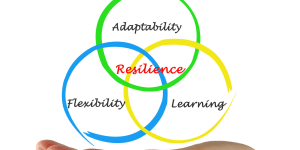In today’s ever-evolving business landscape, the need for exceptional leaders has never been more apparent. Rising to the Challenge: Innovative Techniques for Embracing and Excelling in High Level Leadership Roles delves into the world of leadership, providing invaluable insights and strategies for those who aspire to make a lasting impact. As you embark on this journey, you will discover how to harness your innate abilities and cultivate essential skills to navigate even the most tumultuous seas of the corporate world.
With a blend of cutting-edge techniques and time-tested wisdom, this comprehensive guide empowers you to take the reins and lead your team to unprecedented heights. So, tighten your seatbelts and prepare to elevate your leadership game, as we unfold the secrets to conquering uncharted territories and shattering glass ceilings in the pursuit of excellence.

Key Traits of Successful High Level Leaders
High-level leaders possess a unique set of qualities that distinguish them from the rest. These traits are what makes them effective in driving teams to success and achieving organizational goals. One essential quality that stands out is their ability to inspire and motivate others. A great leader has a clear vision of the future and communicates this vision effectively to their team, empowering them to commit to a shared purpose.
Emotional intelligence is another key trait of successful high-level leaders. They are adept at understanding and managing their emotions, as well as those of their team members. This enables them to build strong relationships and foster a positive working environment. In addition, leaders with high emotional intelligence are better equipped to handle conflicts and navigate challenging situations.
Finally, adaptability and resilience are crucial qualities for high-level leaders. The ever-changing business landscape requires leaders who can quickly adapt to new circumstances and remain steadfast in the face of adversity. By demonstrating resilience and adaptability, leaders can guide their teams through uncertain times and help them emerge stronger on the other side.
Embracing Challenges in High Level Leadership
Challenges are an inevitable part of any high-level leadership role. Embracing these challenges, rather than avoiding them, is what sets exceptional leaders apart. One way to embrace challenges is by viewing them as opportunities for growth and learning. Leaders who adopt this mindset are more likely to find creative solutions and make the most of difficult situations.
Moreover, embracing challenges involves taking calculated risks and pushing oneself beyond one’s comfort zone. This willingness to take risks and learn from failures is a hallmark of successful high level leaders. By leading with courage and conviction, these leaders inspire their teams to take on challenges and achieve greatness.
To truly embrace challenges in high-level leadership, it is essential to cultivate a strong support system. This includes nurturing relationships with mentors, peers, and subordinates who can offer guidance, feedback, and encouragement along the way. By surrounding themselves with a network of supportive individuals, leaders can navigate the complex terrain of high-level leadership with greater confidence and resilience.
Innovative Techniques for Effective Decision-Making
Effective decision-making is a cornerstone of high level leadership. To make sound decisions, leaders must employ innovative techniques that enable them to gather relevant information, analyze complex situations, and weigh the potential consequences of various options. One such technique is the use of data-driven decision-making, which involves leveraging data and analytics to inform choices and strategies. By grounding their decisions in data, leaders can minimize biases and make more objective, informed choices.
Another innovative technique for decision-making is scenario planning. This involves envisioning multiple potential futures and developing strategies for how to respond to each one. By exploring various possible outcomes, leaders can be better prepared to adapt their plans and make informed decisions in the face of uncertainty.
Lastly, effective high level leaders employ collaborative decision-making techniques, such as seeking diverse perspectives and involving team members in the decision-making process. By fostering open communication and encouraging input from others, leaders can gain valuable insights that lead to better decisions and increased buy-in from the team.
Building and Maintaining Strong Teams
Strong teams are the backbone of any successful organization, and high-level leaders play a vital role in building and maintaining these teams. One primary aspect of building strong teams is assembling a diverse group of individuals with complementary skills, experiences, and perspectives. This diversity not only fosters creativity and innovation but also helps to build more resilient teams that can better adapt to change.
Once a team has been assembled, high-level leaders must invest in their development and growth. This includes providing ongoing feedback, coaching, and opportunities for professional development. By prioritizing the growth and well-being of their team members, leaders can foster a culture of continuous improvement and drive sustained success.
Finally, maintaining strong teams requires open communication and trust. High-level leaders must establish a culture of transparency, where team members feel comfortable sharing their thoughts, ideas, and concerns. By actively listening and responding to feedback, leaders can build trust and create a positive working environment where everyone feels valued and supported.
Effective Communication Strategies for High Level Leaders
Effective communication is crucial for high-level leaders, as it enables them to convey their vision, align their team with organizational goals, and manage expectations. One vital communication strategy is active listening, which involves genuinely engaging with others and seeking to understand their perspectives. By practising active listening, leaders can build rapport with their team members, gather valuable insights, and demonstrate empathy.

Another essential communication strategy is the use of storytelling. Storytelling allows leaders to make complex ideas more relatable and memorable, helping to generate buy-in and enthusiasm for their vision. By weaving compelling narratives, high-level leaders can inspire their teams and drive them toward a shared purpose.
Lastly, effective high-level leaders understand the importance of adapting their communication style to suit different audiences and situations. This may involve using different channels, adjusting tone and language, or employing visual aids to convey information more effectively. By being adaptable and versatile in their communication, leaders can ensure that their message resonates with their intended audience and achieves its intended impact.
Adapting to Change and Fostering Innovation
In today’s fast-paced business world, adaptability and innovation are essential for long-term success. High level leaders must be able to anticipate and respond to change, as well as foster an environment that encourages creativity and continuous improvement. One way leaders can promote adaptability is by modelling it themselves – demonstrating a willingness to learn, embrace new ideas, and pivot when necessary.
Fostering innovation requires creating a culture where experimentation and calculated risk-taking are encouraged. This means celebrating successes as well as learning from failures, while also providing the resources and support necessary for team members to explore new ideas and develop novel solutions. By recognizing and rewarding innovative thinking, high-level leaders can cultivate a culture of creativity that drives sustained growth and success.
Additionally, leaders must remain vigilant and informed about emerging trends and technologies that could impact their organization. By staying abreast of the latest developments and integrating them into their strategies, leaders can ensure that their organization remains agile and competitive in a rapidly changing landscape.
Balancing Work-Life Integration in High-Level Roles
High-level leadership roles often come with immense pressure and responsibility, making it essential for leaders to find a balance between their professional and personal lives. Achieving work-life integration involves setting boundaries and prioritizing self-care, alongside the needs of the organization. One way to establish these boundaries is by scheduling dedicated time for self-care activities, such as exercise, hobbies, or socializing with friends and family.
In addition, high-level leaders should strive to delegate tasks and empower their team members to take on responsibilities, rather than trying to do everything themselves. By distributing workloads more evenly, leaders can free up time for themselves and prevent burnout, while also fostering a sense of ownership and accountability among their team members.
Lastly, leaders need to practice self-awareness and recognize when they may be approaching the limits of their capacity. By acknowledging their limits and seeking support from their network, leaders can maintain a healthy work-life balance and ensure their long-term well-being and success.
Developing a Personal Leadership Style
While some common traits and principles define effective high-level leaders, each individual must develop a unique leadership style that aligns with their values, strengths, and context. This personal leadership style should be authentic and resonate with both the leader themselves and the people they lead.
To develop a personal leadership style, leaders should first engage in self-reflection and self-assessment, identifying their core values, strengths, and areas for growth. This introspection can help leaders build greater self-awareness and recognize how their actions impact others.
Next, leaders should seek feedback from others, including team members, peers, and mentors. This feedback can provide valuable insights into how their leadership style is perceived and help identify areas for improvement. By embracing constructive criticism and remaining open to change, leaders can refine and strengthen their leadership style.
Conclusion: Rising to the Challenge and Excelling in High-Level Leadership Roles
In conclusion, high-level leadership roles present numerous challenges and opportunities for growth. By cultivating key traits, embracing challenges, employing innovative decision-making techniques, building strong teams, and honing effective communication strategies, leaders can rise to the occasion and excel in these demanding roles. Furthermore, adapting to change, fostering innovation, achieving work-life integration, and developing a personal leadership style are crucial components of successful high-level leadership. By mastering these elements, leaders can navigate the complexities of their roles with confidence and resilience, ultimately driving their teams and organizations to new heights of success.











